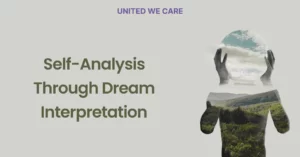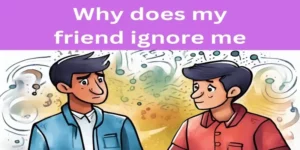Introduction
Kids always love bubbles; some kids are not fond of them, but I was always scared. Bubbles, I mean, who is afraid of bubbles? But that was me; I always thought it was an irrational fear. But after some time, I felt discomfort and disgust seeing many other things which were standard for others. Strawberries, I mean, no one feels their anxiety running after seeing strawberries and pomegranates. So I was intruding on what was wrong with me.
What is Trypophobia
Trypophobia? I was diagnosed with it; it was no irrational fear. A solid aversion for or distaste for densely clustered holes is called trypophobia. When looking at surfaces with tiny holes, people experience nausea, hatred, and misery. Professionals do not yet recognise Trypophobia as a distinct phobia.There haven’t been many studies on this phobia, and the analysis hasn’t determined if trypophobia should be classified as a specific mental illness.Nevertheless, there are numerous anecdotal accounts of persons who have trypophobia.
Symptoms of Trypophobia
People with trypophobia, when staring at an object or surface with a few small holes or features resembling spots, may experience disgust and discomfort. Most trypophobia is visual, and you might experience fear, hatred, and discomfort if you have this phobia. Items help to trigger trypophobia –seeds from a lotus, honeycombs, strawberries, bread with coral seeds, bubbles, condensation, and a cluster of eyes on a cantaloupe etc.
Animals can also induce revulsion and dread with spots on their skin or fur, such as leopards, Dalmatians, or poison dart frogs.
Others might have some of these particular signs:
- Feeling of your skin crawling, the chills, gagging, or nausea
- Rapid pulse
- Perspiration, wooziness, or lightheadedness
- A general feeling of discomfort or anxiety, a strong urge to flee the picture or object
- Emotions of panic or a panic attack, trembling or shaking, visual discomfort, including eye strain, distortions, or illusions
Causes of Trypophobia
There are a few possible causes of trypophobia, but they are still being determined based on scientific evidence.
- According to some scientists, this phobia of densely packed holes may have originated as a biological aversion to harmful or vicious animals. Therefore, the fear of holes may not be a fear of holes but rather an unintentional association of unthreatening objects (such as lotus seed pods) with unsettling creatures (such as a blue-ringed octopus) due to their similar spectral characteristics.
- Put another way, your ability to recognise hazards in your environment may have evolved to the point where it causes trypophobia.
- Some researchers link trypophobia to another evolutionary response: the desire to avoid germs, infectious skin disorders, or illnesses. It is because many persons with trypophobia also strongly dislike scabs, pockmarks, or other patterns of rashes and skin markings.
- Another idea holds that processing irregular patterns makes your brain work harder and consume more oxygen, which results in unpleasant emotions.
- Additionally, it could be a symptom of obsessive-compulsive disorder (OCD).
Effects of Trypophobia
Most people did not hear of trypophobia because of the recent discovery in 2005. A study shows up to 17% of children, and adults may experience trypophobia.

People who have trypophobia don’t have any significant side effects, but in some extreme situations,
- Trypophobia may hinder your ability to work, attend school, or interact with others.
- People have encountered depression, increased stress and impatience, issues with sleep or insomnia, and fear strikes. It happens only in extreme situations.
- It has been seen that More women than men experience trypophobia. Trypophobia may be more likely to develop if one has anxiety, depression, or a disorder of compulsive obsession.
One may prevent trypophobia through relaxation techniques like meditation, mindfulness, or imagining relaxing and comforting images.

How to Overcome Trypophobia
In many cases, exposure therapy may help if trypophobia prevents one from participating in particular activities or enjoying life.
- If you want to help, you must control their reactions; this therapy gradually exposes one to trypophobia stimuli. Nine out of ten people who receive this form of psychotherapy (talk therapy) succeed in overcoming particular phobic disorders.
- Exposure therapy teaches how to breathe and relax before and during exposure. It helps to control response by displaying photos or videos of collections or patterns of holes. The treatment gradually increases the vulnerabilities until holding or touching a sponge-like object with a holey design.
- Cognitive behavioural therapy is an option, and one’s views and reactions to situations that cause trypophobia can be altered.

Conclusion
Although professionals may not officially classify the fear of holes as a phobia, your symptoms nonetheless exist. The next logical step is to speak with a mental health professional if your symptoms upset you emotionally and interfere with your daily activities. They can assist you in examining potential reasons, triggers, and practical techniques for controlling anxiety, disgust, and other undesirable trypophobia-related emotions.
References
- A. T. D. Le, G. Cole, and A. J. Wilkins, “Assessment of Trypophobia and an analysis of its visual precipitation,” Q. Exp. Psychol. (Hove), vol. 68, pp. 2304–2322, 2015.
- W. Can, Z. Zhuoran, and J. Zheng, “Is trypophobia a phobia?,” Psychol: Rep., vol. 120, no. 2, pp. 206–218, 2017.
- M. Vlok-Barnard and D. J. Stein, “Trypophobia: an investigation of clinical features,” Rev. Bras. Psiquiatr., vol. 39, no. 4, pp. 337–341, 2017.
- A. Scaccia and C. Raypole, “Trypophobia: Triggers, causes, treatment, and more,” Healthline, 10-Jan-2022. [Online]. Available: https://www.healthline.com/health/trypophobia. [Accessed: 21-Mar-2023].
- M. Kinai, Trypophobia. North Charleston, SC: Createspace Independent Publishing Platform, 2013.









